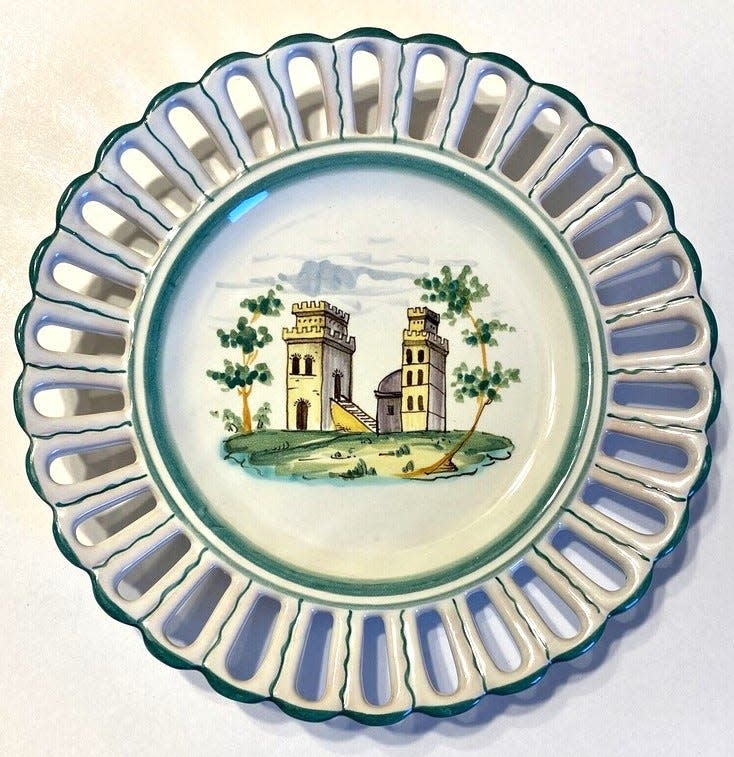John Sikorski: Plate is worth the $5 purchase

Q: I picked up the plate in the photo at a garage sale for $5. The only thing it says on the back is “Made in Perugia.” I have it hanging on a wall in my kitchen. Can you tell me anything about it, and did I get a great deal? I will appreciate anything you can tell me. — P.P., Internet
A: Your pretty ceramic dish was handmade and hand-painted in the town of Perugia, Italy, as marked on the back. The town is famous for decorative ceramics. I suspect it was purchased from one of the many small ceramics shops as a souvenir while one is visiting as a tourist. It was likely made no earlier than the 20th century. You certainly got your five dollars’ worth.
Q: I have a brass double-shaded student lamp with red glass shades. It burns kerosene and has not been electrified. As far as I know, this came down from my great grandparents, who lived in upstate New York early in the 1900s. Can you give me any information on this type of lamp? — E.I., Internet
A: The Merriam Webster definition of student lamp is a “desk reading lamp with a tubular shaft, one or two arms for a shaded light, and originally an oil reservoir.” Student lamps were manufactured in America in huge quantities during the mid- to late Victorian era and the early 20th century. The style continues being made in the electric era. Lamp sellers and marketers gave them the name “student lamp” because they do not cast any under shadow, making them popular among students as well as the general public.
The glass shades were typically made of cased glass green or red to the outside and white to the inside. Often the shades were made of highly decorative art glass by makers like Tiffany & Co., as well as most of the notable art glass producers in France, Bohemia, Austria, etc. Student lamps with art glass shades are eagerly sought after by collectors and start in the $1,000 range. I wish you had included a photograph of your lamp. Based on your description, it would likely sell in the $300 to $600 range.
Q: I am interested in an appraisal of an autograph I have from Jack Benny when he performed with the Chicago Symphony in the 1970s. It is in a frame and in perfect condition. Can you give me an idea of its value today? — F.H., Internet
A: I imagine a lot of our readers are having pleasant “remember when” moments of the “Jack Benny Show.” However, it is not likely they would be interested in buying his autograph; likewise younger generations. Potential dollar value is below $50.
— John Sikorski, with more than 35 years of experience, is an Ocala-based antiques advisor, consultant and broker. Send your questions to Sikorski's Attic, c/o The Ocala Star-Banner, 2121 SW 19th Ave. Road, Ocala, FL 34471-7752, or email absantique@aol.com.
This article originally appeared on The Gainesville Sun: John Sikorski: Plate is worth the $5 purchase

